Abstract
Introduction: Health professions training institutions are challenged to produce greater numbers of graduates who are more relevantly trained to provide quality healthcare. Decentralised training offers opportunities to address these quantity, quality and relevance factors. We wanted to draw together existing expertise in decentralised training for the benefit of all health professionals to develop a model for decentralised training for health professions students.
Method: An expert panel workshop was held in October 2015 initiating a process to develop a model for decentralised training in South Africa. Presentations on the status quo in decentralised training at all nine medical schools in South Africa were made and 33 delegates engaged in discussing potential models for decentralised training.
Results: Five factors were found to be crucial for the success of decentralised training, namely the availability of information and communication technology, longitudinal continuous rotations, a focus on primary care, the alignment of medical schools’ mission with decentralised training and responsiveness to student needs.
Conclusion: The workshop concluded that training institutions should continue to work together towards formulating decentralised training models and that the involvement of all health professions should be ensured. A tripartite approach between the universities, the Department of Health and the relevant local communities is important in decentralised training. Lastly, curricula should place more emphasis on how students learn rather than how they are taught.
Background
There have been repeated calls for the broadening and enhancing of health workers’ instruction worldwide. These have come from groups and individuals1,2 who see a need for health profession educationalists and their institutions to address the quantity, quality and relevance of their graduates.3
In South Africa, training institutions are being asked to increase the number of students they graduate, particularly in medicine and nursing. One of the implications of accepting and educating more students is the challenge of finding clinical teaching platforms beyond the traditional tertiary hospital complexes which are already stretched in terms of capacity. The international literature is growing regarding the value of creating expanded opportunities at every level at which care is provided.4,5
Opportunities for training away from the tertiary academic institutions have been explored in the last two decades with significant growth in the establishment of decentralised training sites. This growth is driven by the desire to broaden the spectrum of student training through exposure to rural and underserved settings.6,7,8,9 There is evidence that students trained in rural settings are more likely to consider working in these areas once they qualify than those not exposed to such experiences.10,11,12 Decentralised training may assist in addressing the current urban and rural workforce mal-distribution.
Stellenbosch University Collaborative Capacity Enhancement through Engagement with Districts (SUCCEED) aims to improve the quality of HIV/AIDS and related services through capacity development and technical assistance in decentralised learning, operational research, and quality improvement and data. As a sub-component of the project, we undertook to explore the potential of a decentralised training approach nationally because of the complex challenges facing training institutions in establishing such sites.13,14,15,16,17 There are no ideal local African models that can serve as an example; so, we engaged in a consultative process working towards a model that could guide a consensus process.
This article describes the first step that consisted of a 2-day workshop to develop a consensus model initially focusing on medical students. It was recognised that much work is being done in decentralised training by other health professions.
Our intention was to create a model for decentralised health professions’ training that can offer context-relevant guidelines for South Africa. This workshop report outlines the key findings from the workshop on which such a model can be based.
Methods
Aims and objectives
The aim of the workshop was to initiate a process to develop an overarching model for decentralised undergraduate training for medical students in South Africa. It was thought that a set of principles would be useful to guide and support the establishment and growth of the training facilities. The objective was to discuss and record existing practices with a view to disseminating ideas and agreeing on best practices that could be of mutual benefit.
Participants
A workshop was held on 8th and 9th October 2015 in Cape Town on decentralised undergraduate medical training. There were 33 participants comprising faculty members from all 9 medical schools in the country, representatives from the National, Eastern Cape and Western Cape Departments of Health and an international expert on community-based education.
Definitions
For the purposes of the workshop, decentralised training was defined as training activities for undergraduate medical students that take place away from tertiary academic complexes – for example: health care centres, primary care clinics and district and rural hospitals.
Other terms in the literature that are used when describing decentralised training are ‘distributed learning’, ‘community-based education’, ‘community-engaged education’, ‘off-campus training’ and ‘rural training’.
Pre-workshop activities
Scoping review
As part of the process of building an evidence-based model for national decentralised training, SUCCEED carried out a scoping review of the international literature. The review explored what decentralised models exist for the training of undergraduate medical students globally, how these models have been implemented and what results have been published.
Ethical considerations
Ethics approval was obtained from the Stellenbosch University Human Research Ethics Committee (approval number #N16/03/034).
Results
Workshop process and findings
Presentation of existing activities: All nine medical schools presented how they were engaged in decentralised training activities. There were wide variations in the duration of decentralised exposure (from short rotations to year-long allocations) as well as considerable diversity in the educational methods with the following elements used: information communication technology (ICT), inter-professional training, community outreach and research. A common enabling feature was a strong connection with the local Department of Health at the district or provincial level.
Some schools reported evaluation results which had resulted in changes to the interaction with students or the academic centre. The challenges included accommodation, transportation and access to ICT. Several schools described the need for more staff development.
Scoping review: The preliminary findings from the scoping review were presented. Five themes emerged that represented essential components of a decentralised training site. They were given as follows:
- responsive student curriculum and assessment
- transformative student experience
- enabling training environment
- effective leadership oversight
- community engagement.
Group work: Participants were split into groups to further discuss the five essential components of decentralised training identified by the scoping review. Groups were asked to establish the key factors to consider within each theme. These are summarised in Table 1.
| TABLE 1: Key factors for decentralised training. |
Visual depictions: After identifying the key factors, each group was asked to draw an image of decentralised training that arose from their discussions and which would clarify their concept. Figures 1–5 show the images developed by the groups. The figures illustrate the factors necessary in establishing decentralised training and highlight the critical roles in decentralised training sites of three key stakeholders: the community, the Department of Health and the academic institutions.
 |
FIGURE 1: A mind map of decentralised training. This mind map organises a decentralised learning organisation (DLO) in terms of the how, why, where, what, when and who. Under each of these headings, various critical elements that need to be considered are listed. The term ‘hybrids’ refers to clinician educators at the decentralised sites who are also involved in supervising and training students. |
|
 |
FIGURE 2: Three-legged stool. This figure uses a traditional African three-legged stool to show that three categories of stakeholders, namely the Department of Health, the community and the academic faculty, are all required to provide a stable decentralised learning platform for health professions students. This interdependent partnership has the power to achieve that despite the uneven and irregular terrain of real-world healthcare. Through supporting learning, such a platform has the potential to improve the health of the population. |
|
 |
FIGURE 3: Concentric circles. This diagram depicts decentralised learning as a holistic concept. Student learning is in the centre of two concentric circles. This vision when shared amongst the community, the university and the health system can deliver successful and relevant decentralised learning. |
|
 |
FIGURE 4: The train model. Decentralised medical education is depicted as a train moving towards the goal of producing fit-for-purpose healthcare professionals for healthier communities, climbing ever higher towards outcomes that will impact on the quality of healthcare and on access to care. The project requires an engine of strategic partnerships with leadership and governance shared amongst higher education institutions, the Department of Health and the communities that are served. This engine will function optimally in the presence of mission alignment, service delivery, teaching and learning and partnerships. It will then be able to pull along the carriage of operational processes required by students, healthcare workers, and community and faculty members. This would be eased by sharing resources, monitoring and evaluation, curriculum and criteria for site accreditation. There are bumps along the line that need to be negotiated. These may be critical challenges within the learning environment, which need to be resolved, or disorienting dilemmas faced by students in the process of learning. |
|
 |
FIGURE 5: A process model. This model for decentralised learning is characterised by a focus on the process to be followed towards the creation of an enabling decentralised training environment. The model recognises the inputs of all the key role players – the Department of Health, the community in which the decentralised site is established and the academic institution responsible for the training programme. The academic institution’s approach is influenced by its specific context, culture and philosophy. These combine to form a vision and a mission for the learning that takes place at the HPCSA accredited decentralised site, which requires the development first of the core curriculum and then the decentralised site. Implementation strategies require shared resources, namely curricula, sites and opportunities for faculty development. Importantly, this entire process is underpinned by principles that include continuity, life-long learning, approaches to learning, inter-professional education and the embedding of graduate attributes. |
|
Prioritisation of key factors
The workshop participants voted for the key factors identified during the group work to prioritise the elements required to establish and support a decentralised training site. The top five priorities were as follows:
- The availability of ICT: This was seen as essential for mobile learning, data recording, sharing of experiences and to prevent social isolation.
- Longitudinal, continuous rotations: These rotations are proven to be more effective for achieving socially accountable, transformative and clinical learning outcomes.
- Focus on primary care: Primary care emphasis in the curriculum would allow a decentralised rotation to be viewed as an advantage from the student perspective.
- Alignment of the medical school’s mission with a decentralised focus: Each medical school should place emphasis on students acquiring learning outcomes that are best achieved outside of the tertiary academic hospital and which is clearly articulated in the faculty’s mission.
- Responsiveness to student needs: As students of various levels of expertise are allocated to decentralised training, identifying and responding to a variety of student needs is required. Staff at decentralised sites need to be made aware of the range of students’ experience.
Discussion
Developing models to establish or strengthen decentralised training sites is timely as there is pressure to train greater numbers of medical students and provide a broader base to existing curricula. The SUCCEED workshop provided a representative dialogue focused on developing such a model for establishing decentralised training sites for health professions’ education.
Both the range of participants and the depth of the discussions created a sense of community and momentum around this common area of interest.
We believe there is the potential for developing a national consensus on models for decentralised training in South Africa. Such a process would naturally involve other health professions as many of these have been more active in community-based training than in medicine. There is a need for the development of practical guidelines for any approach to the implementation of decentralised training in health science faculties. The work developed at the workshop was a first step in this process.
SUCCEED was asked to continue the national dialogue and include other key stakeholders such as the National Department of Health, the Health Professions Council of South Africa (HPCSA), the Committee of Medical Deans and the South African Committee of Health Science Deans.
As part of implementing decentralised training, ways of supporting faculty and supervisors need to be developed. It was considered important to reassure staff at decentralised sites that student allocations have not been found to be a hindrance to the efficient and effective functioning of healthcare delivery. Other important factors are ensuring good training sites, understanding the cost of an ideal facility and identifying quality and quantity metrics to effectively evaluate decentralised training.
Workshop recommendations
The following recommendations were synthesised from the workshop proceedings after being reviewed and verified by the participants:
There needs to be a change of emphasis from how students are taught to how students learn throughout their medical school careers. Decentralised training could be a driver in addressing this perceived mal-alignment. It is important to explore the way in which students are deployed and the activities that they carry out during decentralised training. It needs to be established how students can contribute to the service, the enhancement of care and improve academic standards thereby adding value during their decentralised training. This would help in reframing the interaction between medical schools and decentralised health facilities towards a more symbiotic relationship.18 As part of the collaboration between faculties and health facilities, there is a need to investigate how data collected by the health service can be used to monitor what students are doing and so evaluate their contribution. It would be wise to consider curricular standardisation across the country, especially in terms of decentralised training. This could allow for the development of common tools for monitoring and evaluation, quality assurance and assessment. It would also facilitate the development of common core competencies for medical students in relation to decentralised care to help address the needs of our communities.
Conclusions
The aim of this workshop was to initiate a process to develop an overarching model for decentralised training in the health professions, discussing current practices with a view to disseminate ideas and agree on best practices. It is our hope that this report will be a catalyst for further discussion and debate. All nine South African medical schools are engaged in decentralised training in some way. The extent of their commitment to this was evident during the workshop. This workshop was a first step in the journey to reaching national consensus on how to achieve such transformation.
Acknowledgements
This work is funded by the US Centers for Disease Control and Prevention (CDC) under GH15-1574, South African University-based Technical Assistance Aimed at Improving the quality of HIV/AIDS and related services in the Republic of South Africa under PEPFAR.
Competing interests
The authors declare that they have no financial or personal relationships that may have inappropriately influenced them in writing this article.
Authors’ contributions
M.R.d.V. was the project leader and SUCCEED’s principal investigator. M.R.d.V., I.C., S.v.S. and Z.T. analysed the workshop results and compiled the initial draft of the workshop report. J.B. and I.C. developed the report into a next version, and A.K. completed the final version. T.Y. and K.M. read the manuscript and provided input. All the authors were involved in planning and facilitating the workshop. The following participants of the workshop provided input at the workshop and read and approved the final version of the manuscript: Lauren Anderson, Farzaneh Behroozi, Vanessa Burch, Gcinile Buthelezi, Hoffie Conradie, Richard Cooke, Lara Fairall, Rehmeth Fakroodeen, Therese Fish, Bernhard Gaede, Colette Gunst, Jannie Hugo, Douglas Maleka, Bob Mash, Zuki Tshabalala, John Tumbo, Ben van Heerden, Lynette van der Merwe, Steve Walsh, Parimalarani Yogeswaran.
References
- World Health Organization. Scaling up, saving lives: Task force for scaling up education and training for health workers [homepage on the Internet]; 2008 [cited 2017 Mar 01]. Available from: http://www.who.int/workforcealliance/documents/Global_Health%20FINAL%20REPORT.pdf
- Celletti F, Reynolds T, Wright A, Stoertz A, Dayrit M. Educating a new generation of doctors to improve the health of populations in low- and middle-income countries. PLoS Med. 2011;8(10):e1001108. https://doi.org/10.1371/journal.pmed.1001108
- World Health Organization. Transforming and scaling up health professionals’ education and training: World Health Organization guidelines. Geneva: World Health Organization; 2013 [cited n.d.]. Available from: http://www.who.int
- Frenk J, Chen L, Bhutta ZA, et al. Health professionals for a new century: Transforming education to strengthen health systems in an interdependent world. Lancet. 2010;376(9756):1923–1958. https://doi.org/10.1016/S0140-6736(10)61854-5
- Berwick DM, Finkelstein JA. Preparing medical students for the continual improvement of health and health care: Abraham Flexner and the new ‘public interest’. Acad Med. 2010;85(9 Suppl):S56–S65. https://doi.org/10.1097/ACM.0b013e3181ead779
- Van Schalkwyk SC, Bezuidenhout J, Conradie HH, et al. ‘Going rural’: Driving change through a rural medical education innovation. Rural Remote Health [serial online]. 2014 [cited 2017 Mar 02];14:2493. Available from: http://www.rrh.org.au
- Maley M, Worley P, Dent J. Using rural and remote settings in the undergraduate medical curriculum: AMEE Guide No.47. Med Teach. 2009;31:969–983. https://doi.org/10.3109/01421590903111234
- Barrett FA, Lipsky MS, Lutfiyya MN. The impact of rural training experiences on medical students: A critical review. Acad Med. 2011;86(2):259–263. https://doi.org/10.1097/ACM.0b013e3182046387
- Thistlethwaite JE, Bartle E, Chong AAL, et al. A review of longitudinal community and hospital placements in medical education: BEME Guide No.26. Med Teach. 2013;35:e1340–e1364. https://doi.org/10.3109/0142159X.2013.806981
- Walker JH, DeWitt DE, Pallant JF, Cunningham CE. Rural origin plus a rural clinical school placement is a significant predictor of medical students’ intentions to practice rurally: A multi-university study. Rural Remote Health [serial online]. 2012 [cited 2017 Mar 04];12(1):1–9. Available from: http://www.rrh.org.au
- Wilson NW, Couper ID, De Vries E, Reid S, Fish T, Marais BJ. A critical review of interventions to redress the inequitable distribution of healthcare professionals to rural and remote areas. Rural Remote Health [serial online]. 2009 [cited 2017 Mar 01];9:1060. Available from: http://www.rrh.org.au
- World Health Organization. Increasing access to health workers in remote and rural areas through improved retention: Global policy recommendations [homepage on the Internet]. Geneva: World Health Organization; 2010 [cited 2017 Mar 02]. Available from: http://www.who.int/hrh/en/
- Mariam DH, Sagay AS, Arubaku W, et al. Community-based education programs in Africa: Faculty experience within the Medical Education Partnership Initiative (MEPI) network. Acad Med. 2014;89(8 Suppl):S50–S54. https://doi.org/10.1097/ACM.0000000000000330
- Child MJ, Kiarie JN, Allen SM, et al. Expanding clinical medical training opportunities at the University of Nairobi: Adapting a regional medical education model from the WWAMI program at the University of Washington. Acad Med. 2014;89(8 Suppl):S35–S39. https://doi.org/10.1097/ACM.0000000000000350
- Cristobal F, Worley P. Can medical education in poor rural areas be cost-effective and sustainable: The case of the Ateneo de Zamboanga University School of Medicine? Rural Remote Health [serial online]. 2012 [cited 2017 Mar 05];12:1835. Available from: http://www.rrh.org.au
- Couper I, Worley PS, Strasser R. Rural longitudinal integrated clerkships: Lessons from two programs on different continents. Rural Remote Health [serial online]. 2011 [cited 2017 Mar 05];11:1665. Available from: http://www.rrh.org.au
- Reid J, Cakwe M. The contribution of South African curricula to prepare health professionals for working in rural or under-served areas in South Africa: A peer review evaluation. S Afr Med J. 2011;101:34–38. https://doi.org/10.7196/SAMJ.4526
- Worley P, Prideaux D, Strasser R, Magarey A, March R. Empirical evidence for symbiotic medical education: A comparative analysis of community and tertiary-based programmes. Med Educ. 2006;40:109–116. https://doi.org/10.1111/j.1365-2929.2005.02366.x
|